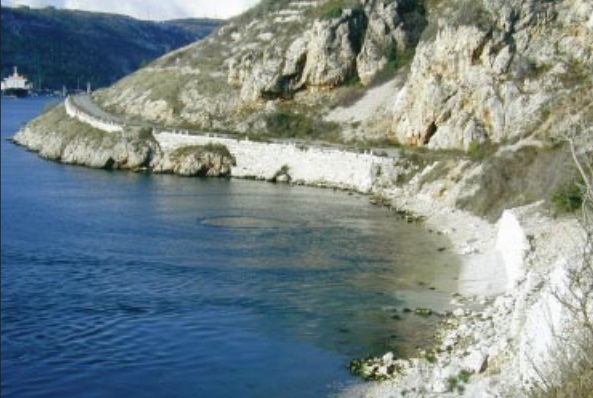The Origine and Evolution of Coastal and Submarine Springs in Bakar Bay
DOI:
https://doi.org/10.3986/ac.v32i1.371Abstract
Članek obravnava obalne in podmorske izvire v Bakarskem zalivu. Največ izvirov je ob severovzhodni obali zaliva, kjer je najnižji del kontakta med kraškim vodonosnikom in flišem, ki predstavlja hidrogeološko bariero. Študijsko območje obsega obalo med Črnim in Žminjco, kjer voda izteka koncentrirano v nizu kraških izvirov in difuzno na večih območjih. Ob dvigu morske gladine ob koncu pleistocena so nekateri obalni izviri prešli pod gladino, pojavili pa so se tudi novi, višji izviri. Veliko podmorskih izvirov ni poznanih, vendar na njihov obstoj kaže študija vodne bilance. Zaradi velikega hidravličnega gradienta veliko podmorskih izvirov deluje kot vrulje. Mešanje morske in sladke vode v hidravlično nestabilnem območju je vzrok, da je voda iz teh izvirov po večini brakična.
The paper presents coastal and submarine springs in Bakar Bay. The northeastern coast of Bakar Bay is abound in springs, since there is the lowest placed contact between large karst aquifer and flysch lithogenetic complex which forms hydrogeological barrier. Studied area is situated between Črno and Žminjca locations, where water flows out in series of concentrated coastal and submarine springs as well as on the places of a diffuse outflow. A rapid raise of sea-level from the end of the Pleistocene changed the hydrogeological conditions so that coastal springs were submerged and new ones, at higher levels appeared. Some of submerged springs continued to throw out water, that is, they started to function as submarine springs (vrulja) due to a strong inflow from the background and high pressures. Some of them were not registered, although according to water balance analyses of wider area, widespread evidences of groundwater outflow could be expected. Their position reflects geological fabric of the area. Groundwaters have intensive flowing gradient. Their flowing out in hydraulically unstable zone have facilitated mixing of sea- water and fresh-water and as a result spring-water is usually brackish.
Downloads

Downloads
Published
How to Cite
Issue
Section
License
Authors guarantee that the work is their own original creation and does not infringe any statutory or common-law copyright or any proprietary right of any third party. In case of claims by third parties, authors commit their self to defend the interests of the publisher, and shall cover any potential costs.
More in: Submission chapter




